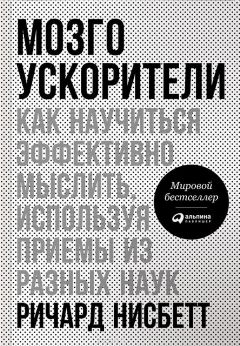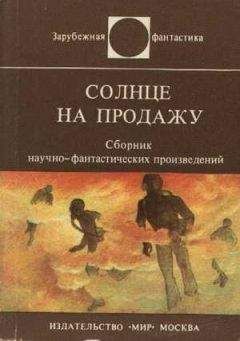105
Kunda and Nisbett, “The Psychometrics of Everyday Life.”
Rein, Martin, and Lee Rainwater. "How Large Is the Welfare Class?" Challenge (Sep-Oct 1977): 20-33.
Kahneman, Daniel. Thinking, Fast and Slow. New York: Farrar, Straus and Giroux, 2011.
Smedslund, Jan. “The Concept of Correlation in Adults.” Scandinavian Journal of Psychology 4 (1963): 165-73.
Zagorsky, Jay L. “Do You Have to Be Smart to Be Rich? The Impact of IQ on Wealth, Income and Financial Distress.” Intelligence 35 (2007): 489-501.
Kuncel, Nathan R., Sarah A. Hezlett, and Deniz S. Ones. “A Comprehensive Meta-Analysis of the Predictive Validity of the Graduate Record Examinations: Implications for Graduate Student Selection and Performance.” Psychological Bulletin 127 (2001): 162-81.
Chapman, Loren J., and Jean P. Chapman. “Genesis of Popular but Erroneous Diagnostic Observations.” Journal of Abnormal Psychology 72 (1967): 193-204.
Chapman, Loren J., and Jean P. Chapman. “Genesis of Popular but Erroneous Diagnostic Observations.” Journal of Abnormal Psychology 72 (1967): 193-204.
Seligman, Martin E. P. “On the Generality of the Laws of Learning.” Psychological Review 77 (1970): 127-90.
Jennings, Dennis, Teresa М. Amabile, and Lee Ross. “Informai Covariation Assessment: Data-Based Vs. Theory-Based Judgments.” In Judgment Under Uncertainty: Heuristics and Biases, edited by Amos Tversky and Daniel Kahneman. New York: Cambridge University Press, 1980.
Valochovic, R. W., С. W. Douglass, С. S. Berkey, В. J. McNeil, and H. H. Chauncey. “Examiner Reliability in Dental Radiography.” Journal of Dental Research 65 (1986): 432-36.
Keel, B. A. “How Reliable Are Results from the Semen Analysis?” Fertility and Sterility 82 (2004): 41-44.
Lu, J-C, F. Chen, H-R Xu, and N-Q Lu. "Comparison of Three Sperm-Counting Methods for the Determination of Sperm Concentration in Human Semen and Sperm Suspensions." LabMedicine 38(2007): 232-36.
Kunda, Ziva, and Richard E. Nisbett. "Prediction and the Partial Understanding of the Law of Large Numbers." Journal of Experimental Social Psychology 22 (1986): 339-54.
Kunda, Ziva, and Richard E. Nisbett. "Prediction and the Partial Understanding of the Law of Large Numbers." Journal of Experimental Social Psychology 22 (1986): 339-54.
Fong, Geoffrey T., David H. Krantz, and Richard E. Nisbett. "The Effects of Statistical Training on Thinking About Everyday Problems." Cognitive Psychology 18 (1986): 253-92.
Christian, Brian. "The A/B Test: Inside the Technology That's Changing the Rules of Business." Wired (2012). http://www.wired.com/business/2012/04/ffabtesting/.
Carey, Benedict. “Academic ‘Dream Team’ Helped Obama’s Effort.” The New York Times. Published electronically Nov. 13, 2013.
Moss, Michael. “Nudged to the Produce Aisle by a Look in the Mirror.” The New York Times. Published electronically August 28, 2013.
Там же.
Cialdini, Robert В. Influence: How and Why People Agree to Things. New York: Quill, 1984.
Cialdini, Robert В. Influence: How and Why People Agree to Things. New York: Quill, 1984.
См., например, McDade et al., “Early Origins of Inflammation: Microbial Exposures in Infancy Predict Lower Levels of С-Reactive Protein in Adulthood.”
Bisgaard, H., N. Li, K. Bonnelykke, B. L. K. Chawes, T. Skov, G. Pauldan- Muller, J. Stokholm, B. Smith, and K.A. Krogfelt. “Reduced Diversity of the Intestinal Microbiota During Infancy Is Associated with Increased Risk of Allergic Disease at School Age.” Journal of Allergy and Clinical Immunology 128 (2011): 646-52.
Olszak, Torsten, D. An, S. Zeissig, M.P. Vera, J. Richter, A. Franke, J.N. Glickman et al. “Microbial Exposure During Early Life Has Per sis tent Effects on Natural Killer T Cell Function.” Science 336 (2012): 489-93.
Slomski, Anita. “Prophylactic Probiotic May Prevent Colic in Newborns.” Journal of the American Medical Association 311 (2014).
Balistreri, William F. “Does Childhood Antibiotic Use Cause IBD?” Medscape Today (January 2013). http://www.medscape.com/viewarticle/777412.
Kuo, Frances Е., and William С. Sullivan. “Aggression and Violence in the Inner City: Effects of Environment via Mental Fatigue.” Environment and Behavior 33 (2001): 543-71.
Там же.
Hamre, B.K., and R.C. Pianta. “Can Instructional and Emotional Support in the First- Grade Classroom Make a Difference for Children at Risk of School Failure?” Child Development 76 (2005): 949-67.
Kuo, Frances E., and William C. Sullivan. “Aggression and Violence in the Inner City: Effects of Environment via Mental Fatigue.” Environment and Behavior 33 (2001): 543-71.
Нисбетт Р. Что такое интеллект и как его развивать. Роль образования и традиций. — М.: Альпина нон-фикшн, 2015.
Deming, David. “Early Childhood Intervention and Life-Cycle Skill Development.” American Economic Journal: Applied Economics (2009): 111-34.
Magnuson, K., C. Ruhm, and J. Waldfogel. “How Much Is Too Much? The Influence of Preschool Centers on Children’s Social and Cognitive Development.” Economics of Education Review 26 (2007): 52-66.
Roberts, N.P., N.J. Kitchiner, J. Kenardy, and J. Bisson. “Multiple Session Early Psychological Interventions for Prevention of Post-Traumatic Disorder.” Cochrane Summaries (2010). http://summaries.cochrane.org/CD006869/multiple-session-early-psychological-interventions-for-prevention-of-post-traumatic-stress-disorder.
Wilson, Timothy D. Redirect: The Surprising New Science of Psychological Change. New York: Little, Brown, 2011.
Pennebaker, James W. “Putting Stress into Words: Health, Linguistic and Therapeutic Implications.” Behavioral Research and Therapy 31 (1993): 539-48.
Wilson, Timothy D. Redirect: The Surprising New Science of Psychological Change. New York: Little, Brown, 2011.
Последний выпуск 9 сезона программы «Напуганы, точно!» был показан на канале А&Е 3 сентября 2015 г. — Прим. пер.
Wilson, Timothy D. Redirect: The Surprising New Science of Psychological Change. New York: Little, Brown, 2011.
Там же.
Prentice, Deborah A., and Dale T. Miller. “Pluralistic Ignorance and Alcohol Use on Campus: Some Consequences of Misperceiving the Social Norm.” Journal of Personality and Social Psychology 64 (1993): 243-56.
Термин «регрессия» может слегка сбить с толку, поскольку кажется, что выражение «регрессия к среднему значению» — это совсем не то, что исследование соотношения между набором независимых переменных и зависимой переменной. Одно и то же слово используется для таких разных целей потому, что Карл Пирсон, изобретатель корреляционного метода, названного его именем, впервые использовал его для изучения корреляции внутри популяции связанных между собой индивидов. Корреляция роста отцов и детей всегда показывает регрессию к среднему значению. У необычайно высоких отцов сыновья, как правило, ниже их, у отцов очень маленького роста сыновья обычно повыше. Корреляция здесь — это простой анализ регрессии, связывающей одну переменную с другой. Множественная регрессия изучает связь каждой отдельной переменной из целого набора с каждой другой переменной из другого набора.
Cheney, Gretchen. “National Center on Education and the Economy: New Commission on the Skills of the American Workforce.” National Center on Education and the Economy, 2006.
Heraty, Noreen, Michael J. Morley, and Alma McCarthy. “Vocational Education and Training in the Republic of Ireland: Institutional Reform and Policy Developments Since the 1960s.” Journal of Vocational Education and Training 52 (2000): 177-99.
Hanushek, Eric A. “The Economics of Schooling: Production and Efficiency in Public Schools.” Journal of Economic Literature 24 (1986): 1141-77.
Krueger, Alan B. “Experimental Estimates of Education Production Functions.” Quarterly Journal of Economics 114 (1999): 497-532.
Shin, In-Soo, and Jae Young Chung. “Class Size and Student Achievement in the United States: A Meta-Analysis.” Korean Educational Institute Journal of Educational Policy 6 (2009): 3-19.
Samieri, C, C. Feart, C. Proust-Lima, E. Peuchant, C. Tzourio, C. Stapf, C. Berr, and P. Barberger- Gateau. “Olive Oil Consumption, Plasma Oleic Acid, and Stroke Incidence.” Neurology 77 (2011): 418-25.
Fong, Calvin S., P. Mitchell, E. Rochtchina, E. T. Teber, T. Hong, and J. J. Wang. “Correction of Visual Impairment by Cataract Surgery and Improved Survival in Older Persons.” Ophthalmology 120 (2013): 1720-27.
Samieri, C., C. Feart, C. Proust-Lima, E. Peuchant, C. Tzourio, C. Stapf, C. Berr, and P. Barberger-Gateau. “Olive Oil Consumption, Plasma Oleic Acid, and Stroke Incidence.” Neurology 77 (2011): 418-25.
Humphrey, Linda L., and Benjamin K. S. Chan. “Postmenopausal Hormone Replacement Therapy and the Primary Prevention of Cardiovascular Disease.” Annals of Internal Medicine 137 (2002). Published electronically August 20, 2002.
Klein, Е. A. “Vitamin Е and the Risk of Prostate Cancer: The Selenium and Vitamin E Cancer Prevention Trial.” Journal of the American Medical Association 306 (2011). Published electronically October 12, 2011.
Offit, Paul A. Do You Believe in Magic? The Sense and Nonsense of Alternative Medicine. New York: Harper-Collins, 2013.
Там же.
Lowry, Annie. “Caught in a Revolving Door of Unemployment.” The New York Times, November 16, 2013.
Kahn, Robert. “Our Long-Term Unemployment Challenge (in Charts).” 2013. http://blogs.cff.org/kahn/2013/04/17/our-long-term-unemployment-challenge-in-charts/.
Bertrand, Marianne, and Sendhil Mullainathan. “Are Emily and Greg More Employable Than Lakisha and Jamal? A Field Experiment on Labor Market Discrimination.” National Bureau of Economic Research Working Paper No. 9873, 2003.
Fryer, Roland G., and Steven D. Levitt. “The Causes and Consequences of Distinctively Black Names.” The Quarterly Journal of Economics 119 (2004): 767-805.





